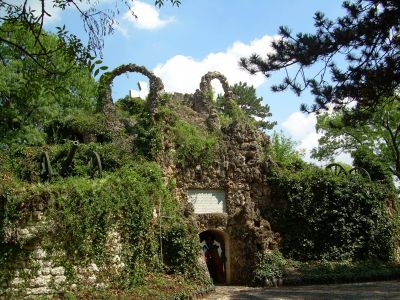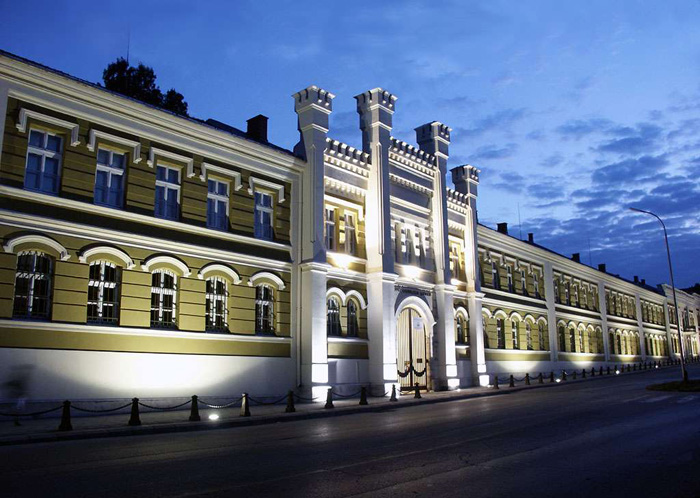Places and Objects in Pleven Municipality

Panorama "Pleven epic 1877" - city of Pleven

Chapel-Mausoleum "St. Georgi Pobedonosets" - the city of Pleven

"Tsar Liberator Alexander II" House-Museum

Skobelev Park - Museum - Pleven

Romanian Mausoleum and Memorial Park

Museum "Grand Duke Nikolai Nikolaevich"

His Royal Highness Carol I House Museum - Pordim

The old bridge on the river Vit near Pleven

Regional historical museum

Ancient fortress "Storgozia" - town of Pleven

Church "Saint Nicholas" 1834 - Pleven

"Darenie Svetlin Rusev" Gallery - Pleven

DKT "Ivan Radoev" - building of the first community center in Pleven, 1869.

Monument to the 4th Pleven infantry regiment
Interactive map


"St. George the Victorious"













The imposing building - Panorama "The Epic of Pleven 1877" was built in connection with the 100th anniversary of the battles at Pleven during the Russian-Turkish war 1877-1878 and the liberation of the city on 10.12.1877.
See more

"St. George the Victorious"
To perpetuate the memory of the heroes of the Pleven epic, in 1902, the "Tsar Liberator Alexander II" committee, under the chairmanship of the prominent revivalist and writer Stoyan Zaimov, decided to erect a chapel-mausoleum in Pleven.

The museum complex House-Museum "The Liberation of Pleven 1877" and the park attached to it were built together with its adjacent artistic and decorative fence in 1907, in honor of the 30th anniversary of the Liberation of Pleven -1877.

In 1898, at a municipal session, the condition of the Russian monuments from the Liberation War was considered, measures were proposed for their restoration and for preserving the bones of the Russian and Romanian soldiers who died in the battles for Pleven. At the same time, the Association of Bulgarian fighters and militiamen established a special committee, which was entrusted with the maintenance of the existing monuments from the war and the construction of new ones, as a sign of gratitude to the Russian people and Emperor Alexander II. The initiative is supported by the state institutions and the entire Bulgarian people. To the south of the city, on the former battlefield, where several Russian monuments are already standing, land has been allocated for the construction of a memorial park named after Gen. M. D. Skobelev.

The Romanian mausoleum near the village of Grivica was opened in 1902 on the occasion of the 25th anniversary of the Russo-Turkish War of 1877-1878 and the participation of the Romanian army in the battles of Grivica and Pleven in 1877.

The house of Ivan Stoykov-Troyanchanina was built in the period 1862-1865. In 1877, the Russian emperor, the commander-in-chief of the Danube Russian army, the Romanian prince, prominent Russian military leaders resided there. From October 26 to December 10, the Russian Headquarters was quartered here.

Varban Iliev's house was built after the war, in close proximity to the building where the Romanian General Headquarters was housed and where Prince Karol I lived during the battles for Pleven.

The old bridge on the Vit river is an important economic and commercial infrastructure outside the city, related to the history of Pleven from the time of the Russo-Turkish war 1877-1878. Five months of fighting continued, three bloody storms marked the development of the Pleven epic, and its end was decided in the Vit river valley around the Usta Gencho bridge.

The history of the Pleven area is a thousand years old. Discovered paleontological findings testify to life on these lands from 70 million years ago. The rich historical past and the preserved ruins of ancient fortresses and buildings early on provoked the interest of Pleven intellectuals-enthusiasts in their study. In 1903, an Archaeological Society was founded, which set itself the goal of creating a museum.

The late antique and medieval fortress Dianenzium/Dianensium Storgozia/Pleven is located in Kaylaka Park 2.7 km south of the center of the city of Pleven, on a high flat plateau, on the left bank of the Tuchenitsa River, which is naturally protected by the steep banks of the river. The place keeps traces of inhabitants from the bronze age.

The Church "Saint Nicholas the Wonderworker" is a medieval Bulgarian Orthodox church in Pleven, declared a cultural monument. It is located in the center of the city, in the immediate vicinity of the Drama Theater "Ivan Radoev".

Academician Svetlin Rusev is a world-renowned artist whose paintings delight connoisseurs from all continents. He is one of the biggest art collectors in Bulgaria and one of the most generous donors.
In 1984, Academician Svetlin Rusev presented to his hometown Pleven 322 works of art - painting and sculpture - from his personal collection.

The building used by the "Ivan Radoev" Drama and Puppet Theater was built at the end of the 19th century, as a building of the first community center in Pleven. On October 1, 1869, Nestor Markov, a well-known teacher from Pleven at that time, gathered a hundred awake and liberal citizens who donated their own funds as founders and facilitators of the first community center in the city of Pleven.

The monument of the 4th infantry regiment of Pleven is one of the most impressive military monuments in Bulgaria, erected in memory of 140 officers, non-commissioned officers and soldiers who died in the Serbo-Bulgarian war of 1885. It was built with the funds of the regiment and the relatives of the dead. It is the work of the sculptor Zheko Spiridonov - one of the founders of modern Bulgarian sculpture.
Geocoding Error Occurred.
Tried to Geocode:
Error Type:
Please be sure to follow the tutorial on how to setup the Google APIs required for the Advanced Google Map Widget.
Google Map API Key Tutorial